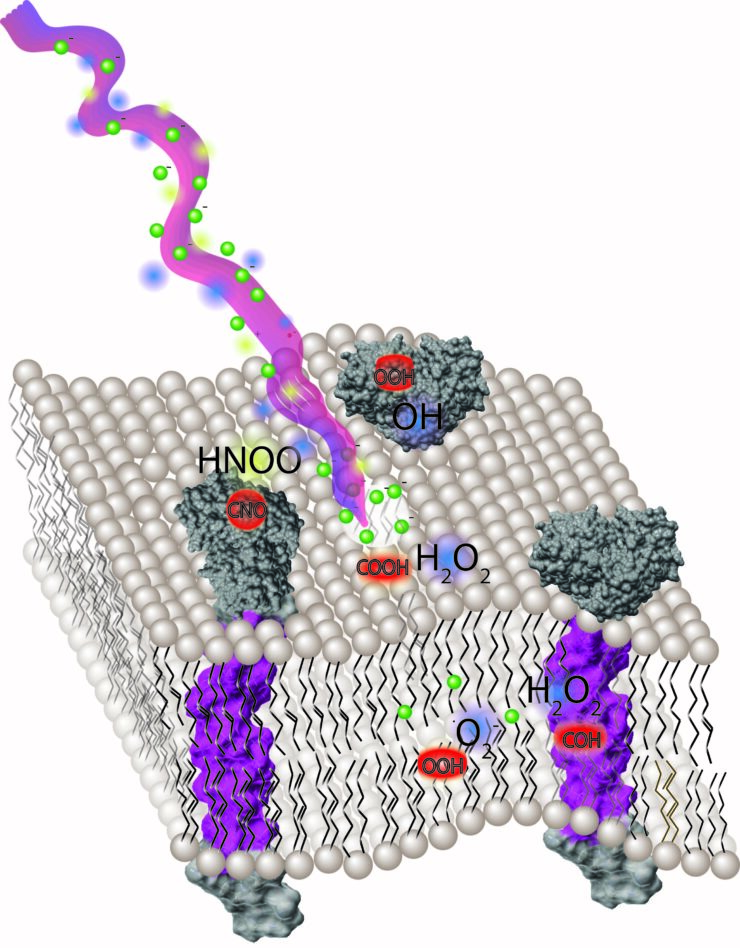Membrane models
Cold atmospheric plasma (CAP) has been tested in clinical assays as an alternative to classical antibiotic and chemotherapeutic therapy with some success. Cell membranes are usually the first sensitive attack point of cold atmospheric plasma (CAP) and it has been shown that multiple CAP components can have different effects on membranes. The accumulation of charged species can induce membrane rupture, electric fields can induce electroporation and the reactive oxygen and nitrogen species (RONS) can induce oxidation of different membrane components such as lipids and proteins (Fig. 1).

Figure 1 Different components of CAP act on the plasma membrane
Our laboratory therefore focuses on the effects of CAP on lipid bilayer membranes. We use artificial and biological models (Fig. 2) to decipher the effects of different CAP components on the membrane in a long term goal to increase efficiency of CAP towards pathogenic bacteria by modulating CAP parameters.

Figure 2 Different membrane models used in our study
The two main researchers working on model membranes are Andreas Sonnen and Joseph Lorent

